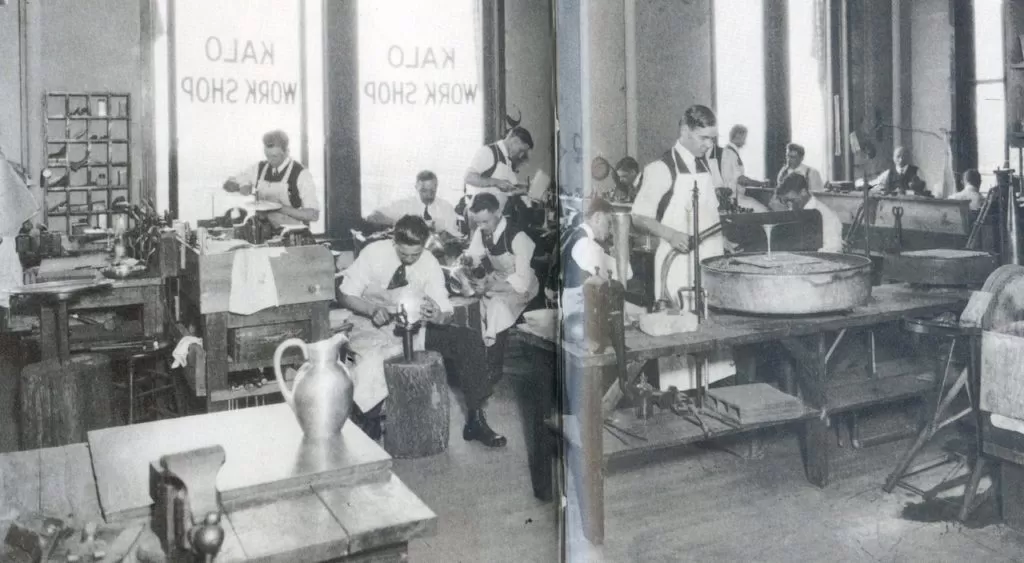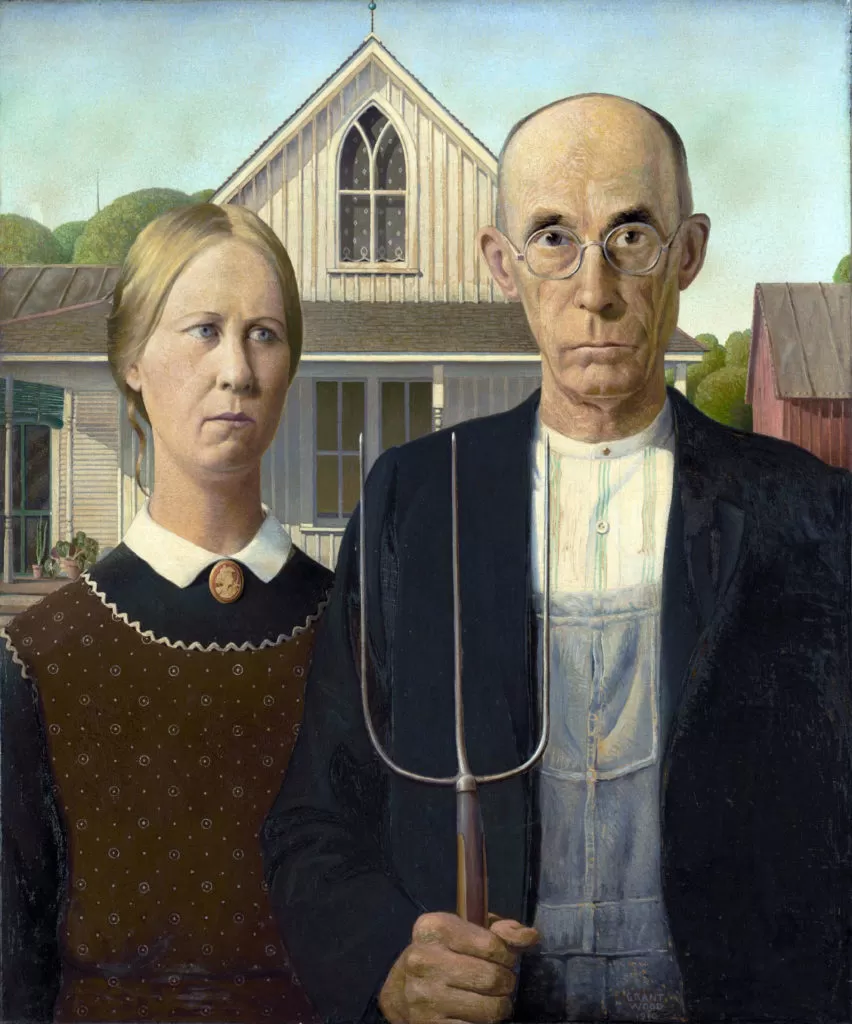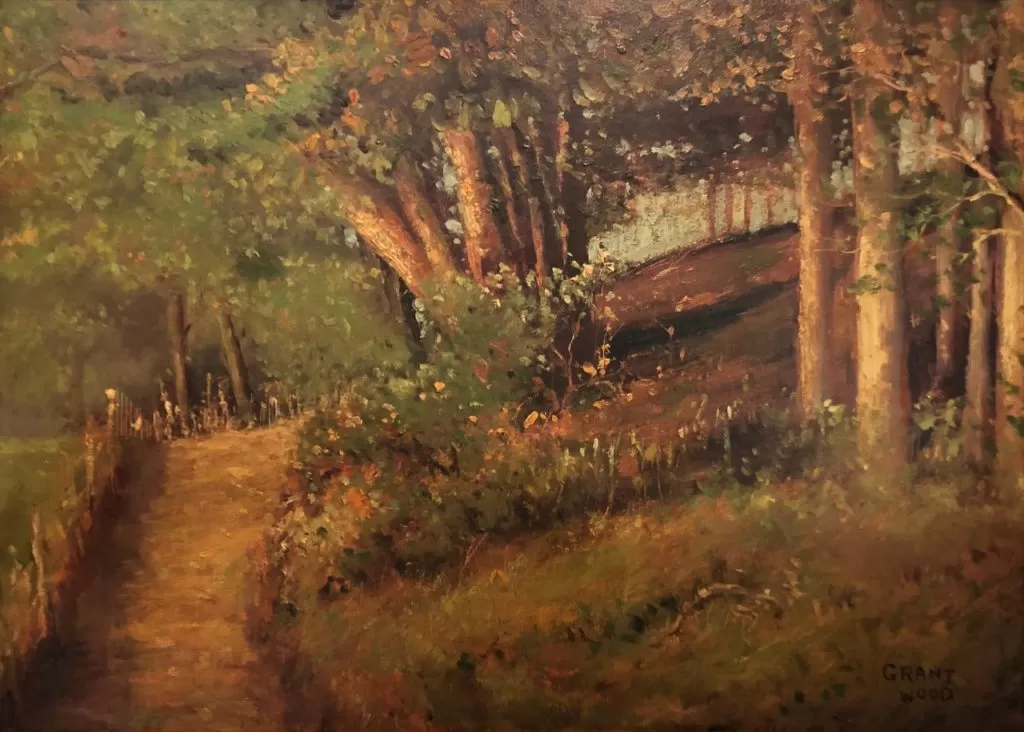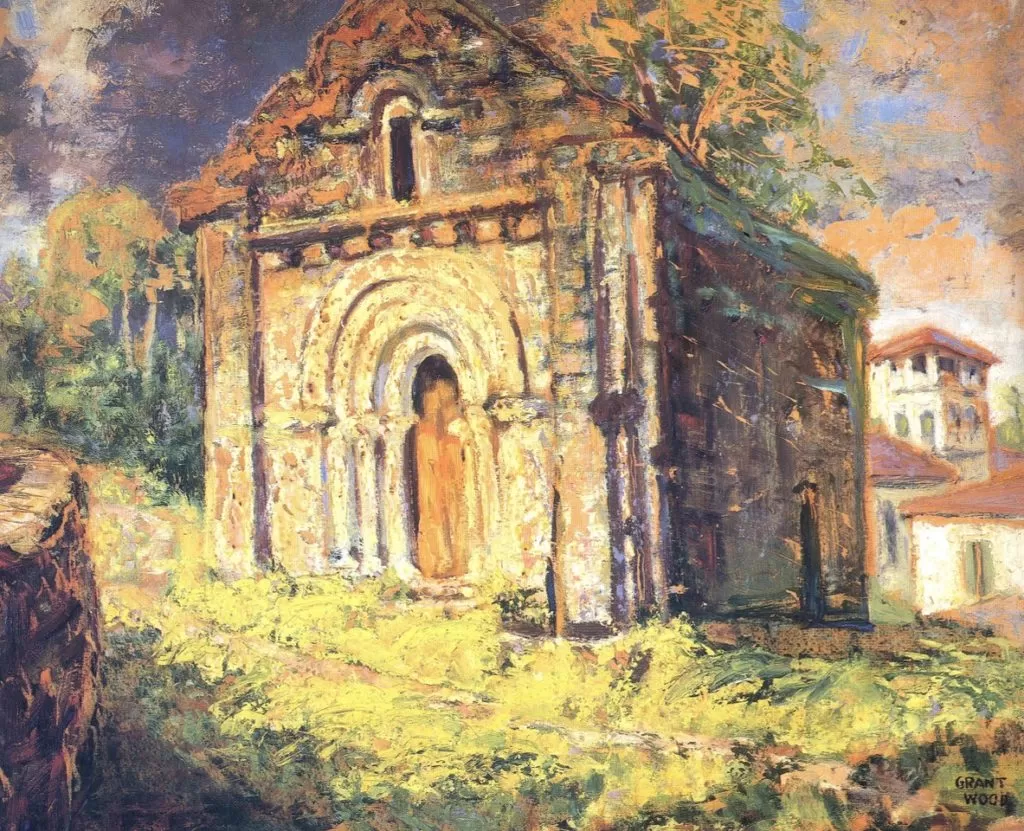A Grant Wood Little Journey
Some of my most memorable little journeys did not require a full tank of gas or Google maps, but instead took place right here in my office. Some started as phone conversations with friends; others took place inside one of the research books I had pulled down from a bookshelf. In more recent times they have taken place inside the internet, where — despite the preponderance of salacious headlines, annoying ads, and hyperbolic stories masquerading as journalism – you can actually find reliable information researchers have generously posted for others who share their passion.

Growing up in the Midwest I had always known about the artist Grant Wood, famous for his infamous couple posing in American Gothic. Grant Wood (1891-1942) led a complicated life, with numerous tangents. At age 18 he left Cedar Rapids, Iowa to study under Arts and Crafts designer Ernest Batchelder at the Minneapolis Handicraft Guild. In 1913 he impressed Clara Barak Wells enough to hire him as a silversmith at her Kalo Shops outside Chicago. The following year he and a fellow Kalo silversmith left to form the competing Volund Shop — but by 1917 Wood was back in Cedar Rapids, determined to make a living as a painter.

American Gothic, however, did not emerge from his tiny studio until 1930. His conversion to Regional style artistry was cut short when Wood died in 1942 of pancreatic cancer on the eve of his 51st birthday. While scholars, collectors, and authors have analyzed nearly every detail of those 12 years of Regional art, his earlier years – from 1917 until 1929 – have often been labeled as “experimental” and summarily dismissed.

Between 1920 and 1928 Grant Wood made four trips to Europe, where he traveled, sketched, and painted both rural and street scenes in the popular Impressionistic style of art, noted for its loose brushwork and vibrant colors, and made famous by such artists as Pierre-Auguste Renoir, Camile Pissarro, and Paul Cezanne.
Unlike his Regional paintings, we have no idea how many Impressionist paintings Wood completed. Whereas his Regional style paintings were large, distinctive, and quickly destined for museum collections, his Impressionist paintings were smaller, done more quickly, and were sold by Wood wherever he could: in the streets of Paris and Sorento, on board ships headed back to the United States, in Iowa department store displays, in galleries, competitions, and exhibitions, and even in a Cedar Rapids funeral home.
Last April, while the country was temporarily paralyzed with fear, I was able to purchase a heavily-discounted example of Grant Wood’s Impressionistic art. Like any historian, I could not be content to simply admire it. I had to know everything there was about it, which, like Alice’s famed White Rabbit, has drawn me into a bottomless rabbit hole. With my assistant Kate’s help, we are taking the first steps of locating as many of Grant Wood’s 1917-1928 Impressionistic paintings as possible, and soon will be documenting and sharing them on a new website.

While many will be as difficult to find as a needle in one of Grant Wood’s Iowa haystacks, the project and the challenge seem worthwhile. So, if you have ever seen one of Grant Wood’s Impressionistic paintings hanging in a museum or private collection, I would love to hear about it, as I take the first steps on yet another little journey.
Until next week,
“I had to go to France to appreciate Iowa.” – Grant Wood
Bruce
